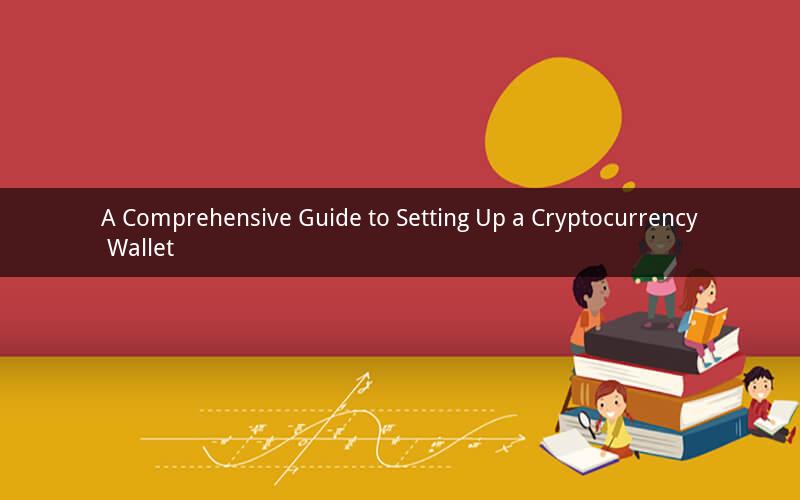
Cryptocurrency wallets are an essential tool for managing digital assets like Bitcoin, Ethereum, and other altcoins. Whether you are a beginner or an experienced investor, understanding how to set up a cryptocurrency wallet is crucial for securing your digital wealth. In this article, we will explore the various types of wallets, the process of setting up a wallet, and the best practices for maintaining your digital assets.
1. Understanding Cryptocurrency Wallets
A cryptocurrency wallet is a software or hardware device that stores, sends, and receives digital currencies. It acts as a personal ledger, providing you with a unique address to receive funds and a private key to authorize transactions. There are two main types of wallets: hot wallets and cold wallets.
a. Hot wallets: These wallets are connected to the internet and offer convenience, but they are more susceptible to hacking and theft.
b. Cold wallets: These wallets are offline and provide enhanced security, but they may be less user-friendly.
2. Types of Cryptocurrency Wallets
a. Software wallets: These are digital wallets available on your computer, smartphone, or tablet. Examples include MetaMask, Exodus, and Trust Wallet.
b. Mobile wallets: These are apps designed for smartphones, allowing you to manage your cryptocurrencies on the go. Examples include Blockfolio, Coinomi, and MyCelium.
c. Hardware wallets: These are physical devices designed to store cryptocurrencies offline, providing maximum security. Examples include Ledger Nano S, Trezor Model T, and CoolWallet S.
3. Setting Up a Cryptocurrency Wallet
a. Research and choose a wallet: Based on your needs, choose a wallet that suits your requirements. Consider factors like security, ease of use, and compatibility with your preferred cryptocurrencies.
b. Download and install the wallet: Once you have chosen a wallet, download and install it on your device. Follow the instructions provided by the wallet provider.
c. Create a wallet: After installing the wallet, you will need to create a new wallet. This process may involve generating a unique wallet address and setting up a password or PIN to secure your wallet.
d. Backup your wallet: It is essential to backup your wallet to prevent losing your cryptocurrencies. Most wallets provide a backup feature, allowing you to export your private keys or mnemonic phrases. Store this backup in a safe and secure location.
4. Best Practices for Managing Your Cryptocurrency Wallet
a. Use strong passwords: Create strong, unique passwords for your wallet and avoid using the same password for multiple accounts.
b. Enable two-factor authentication (2FA): 2FA adds an extra layer of security by requiring a second form of verification, such as a code sent to your phone.
c. Regularly update your wallet: Keep your wallet updated to ensure it is equipped with the latest security features and bug fixes.
d. Be cautious of phishing attacks: Be wary of suspicious emails, messages, or websites that may attempt to steal your private keys or login credentials.
e. Use a secure internet connection: Avoid using public Wi-Fi networks when accessing your wallet, as they may be compromised.
5. Common Questions and Answers
Question 1: What is the difference between a hot wallet and a cold wallet?
Answer: Hot wallets are connected to the internet and offer convenience, but they are more susceptible to hacking and theft. Cold wallets are offline and provide enhanced security but may be less user-friendly.
Question 2: How do I recover my cryptocurrency if I lose my private key or mnemonic phrase?
Answer: If you lose your private key or mnemonic phrase, you may not be able to recover your cryptocurrency. It is essential to backup your wallet and store the backup in a secure location.
Question 3: Can I use the same wallet for all cryptocurrencies?
Answer: Some wallets support multiple cryptocurrencies, but it is best to use a dedicated wallet for each cryptocurrency to ensure maximum security.
Question 4: How do I keep my cryptocurrency safe from hackers?
Answer: To keep your cryptocurrency safe from hackers, use strong passwords, enable two-factor authentication, and be cautious of phishing attacks. Also, store your cryptocurrencies in a cold wallet for enhanced security.
Question 5: What should I do if I suspect my wallet has been hacked?
Answer: If you suspect your wallet has been hacked, change your password immediately and notify the wallet provider. Monitor your transactions and report any unauthorized activity to the relevant authorities.
In conclusion, setting up a cryptocurrency wallet is a crucial step in managing your digital assets. By understanding the types of wallets, the setup process, and best practices for maintaining your wallet, you can ensure the security and accessibility of your cryptocurrencies. Always prioritize security and stay informed about the latest developments in the cryptocurrency space to protect your digital wealth.